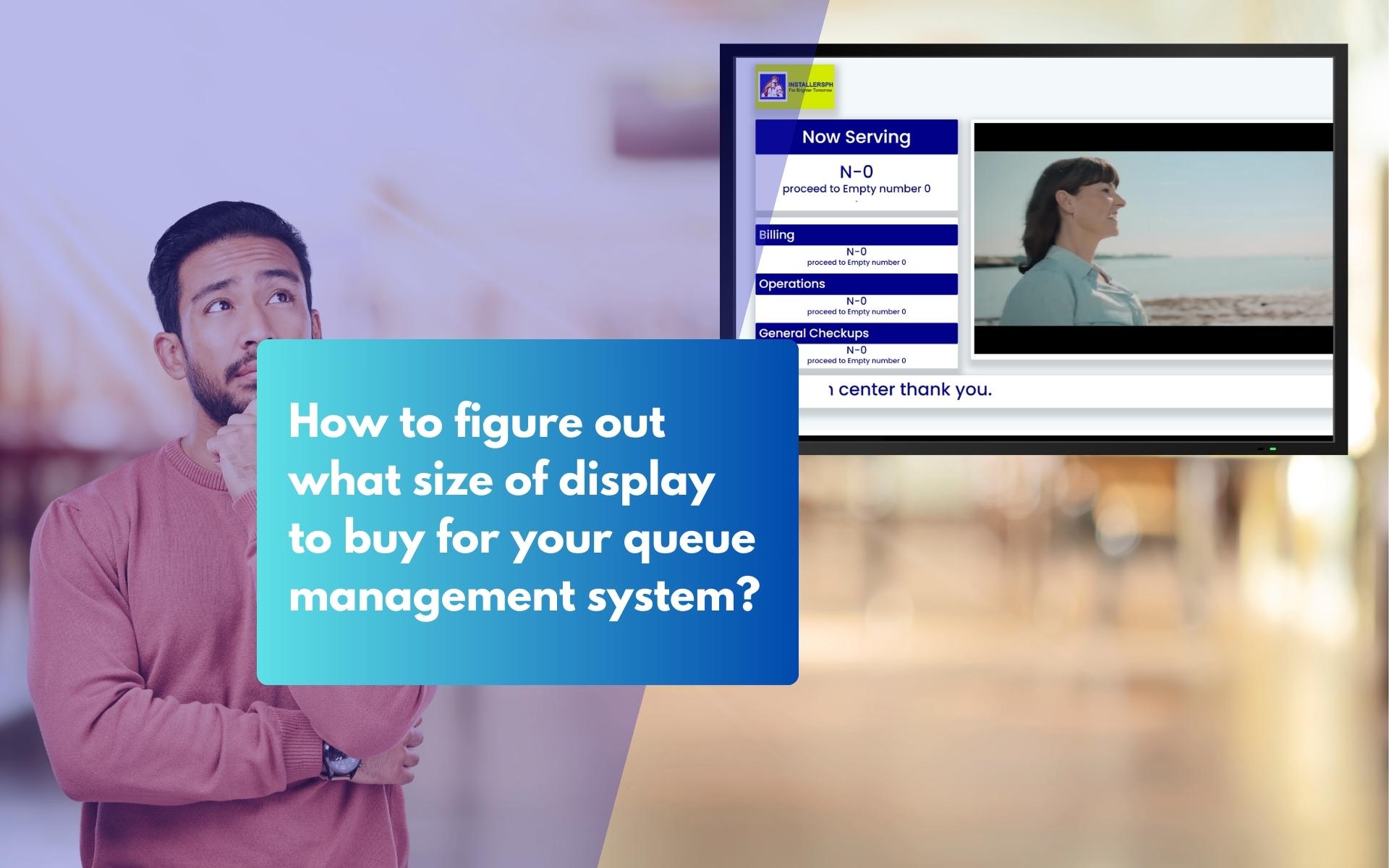Optimizing Your Customer Flow with a Queuing Management System In the relentless world of business, the efficient management of customer flow has …
How to figure out what size of display to buy for your queue management system?

Choosing the right size of display for your queue management system is essential for ensuring the effectiveness and efficiency of your system. A larger display may be more visible and easier to read from a distance, but it may also be more expensive and may not be necessary for all types of businesses. On the other hand, a smaller display may be more affordable and sufficient for displaying simple information such as queue numbers or wait times, but it may not be suitable for displaying detailed information or for businesses with a large number of elderly customers. When determining the size of the display for your queue management system, it’s important to consider a variety of factors such as the location and visibility of the display, the distance from which it will be viewed, the type of information that will be displayed, the resolution of the display, your budget, the environment in which it will be used, the type of business you operate, the demographics of your customers, and your future needs. By considering these factors, you can determine the optimal size of the display for your queue management system.
Here are some key factors to consider when figuring out what size of display to buy for your queue management system:
1. Location and visibility
The size of the display should be based on the location and visibility of the display. If the display is located in a high-traffic area, it should be larger so that it is easily visible to customers. On the other hand, if the display is located in a more private area, it may be sufficient to have a smaller display.
2. Distance from the display
The size of the display should also be based on the distance from which it will be viewed. For example, if the display is located in a bank lobby and will be viewed from a distance of 10 feet or more, it should be larger so that it is easily readable. On the other hand, if the display is located in a retail store and will be viewed from a distance of 2-3 feet, it may be sufficient to have a smaller display.
3. Type of information displayed
The size of the display should also be based on the type of information that will be displayed. For example, if the display will be used to display detailed information such as account balances or product descriptions, it should be larger to allow for easy reading. On the other hand, if the display will be used to display simple information such as a queue number or a wait time, it may be sufficient to have a smaller display.
4. Resolution
The size of the display should also be based on the resolution of the display. Higher resolution displays are capable of displaying more detailed and accurate information, which may be important for certain types of businesses. However, higher resolution displays may also be more expensive, so it’s important to consider your budget when making this decision.
5. Budget
The size of the display should also be based on your budget. Larger displays tend to be more expensive, so if you have a limited budget, you may need to consider a smaller display. However, it’s important to keep in mind that a larger display may provide a better customer experience and may be worth the investment.
6. Environment
The size of the display should also be based on the environment in which it will be used. For example, if the display will be used outdoors, it should be larger and have a higher resolution to ensure that it is easily visible and readable in bright sunlight. On the other hand, if the display will be used indoors, the size and resolution may not need to be as high.
7. Type of business
The size of the display should also be based on the type of business you operate. For example, a bank may require a larger display to display detailed information such as account balances or transaction histories, while a retail store may be able to get away with a smaller display that simply displays queue numbers or wait times.
8. Customer demographics
The size of the display should also be based on the demographics of your customers. For example, if you have a large number of elderly customers who may have difficulty seeing small text, you may want to consider a larger display to ensure that the information is easily readable.
9. Future needs
It’s also important to consider your future needs when determining the size of the display. If you anticipate that your business will grow and you will need to display more information in the future, it may be worth investing in a larger display to ensure that it can accommodate your future needs.
Conclusion
Overall, determining the size of the display for your queue management system requires careful consideration of a variety of factors. By considering the location and visibility of the display, the distance from which it will be viewed, the type of information that will be displayed, the resolution of the display, your budget, the environment in which it will be used, the type of business you operate, the demographics of your customers, and your future needs, you can determine the optimal size of the display for your queue management system.
Related Articles
Queuing Management Systems – The Key to Improving Your Business’ Bottom Line In the fast-paced world of business, time is money. Every …
Boosting Your Customer Satisfaction with a Queuing Management System. In today’s fast-paced world, customers expect not only quality products and services but …



